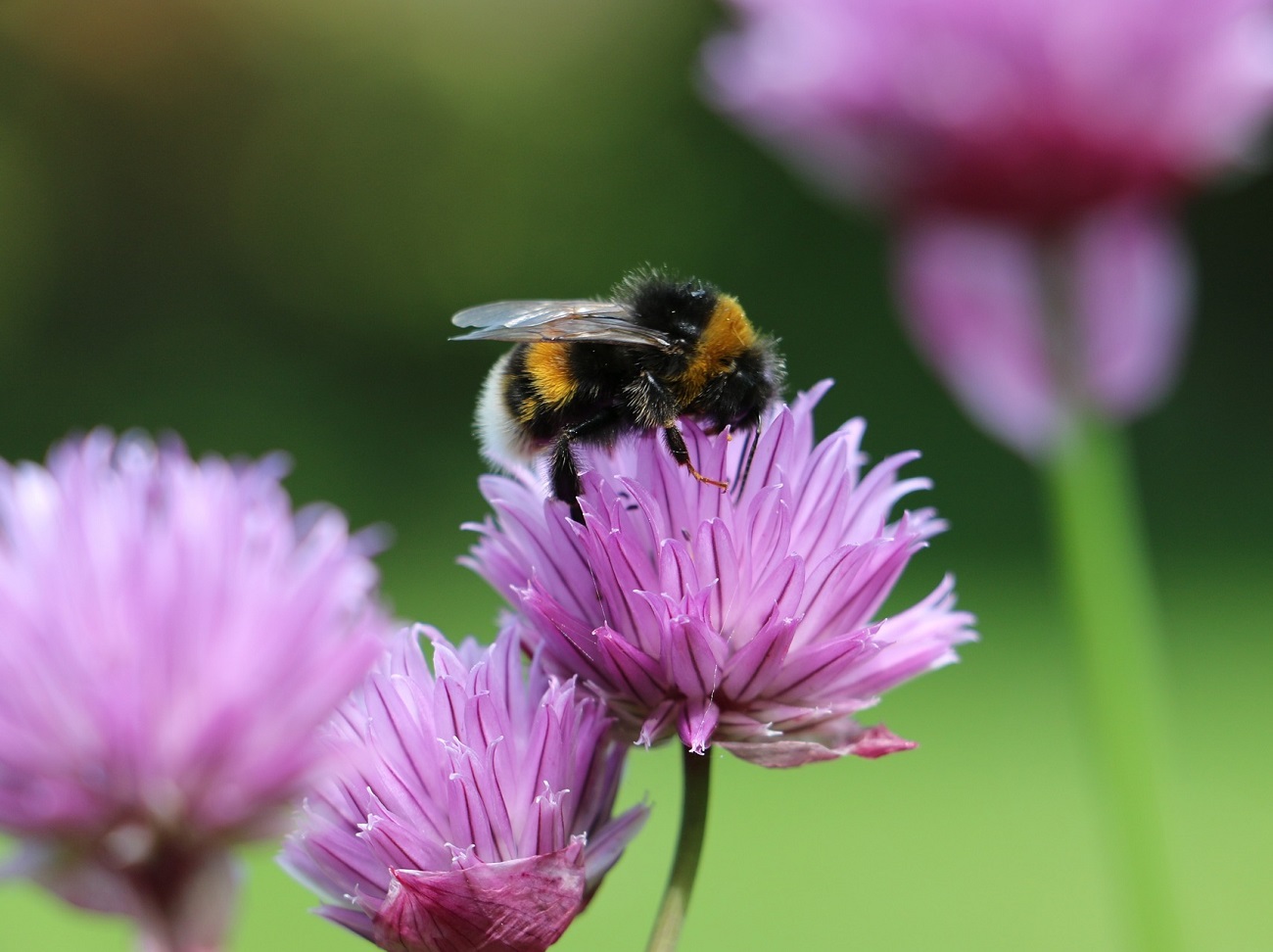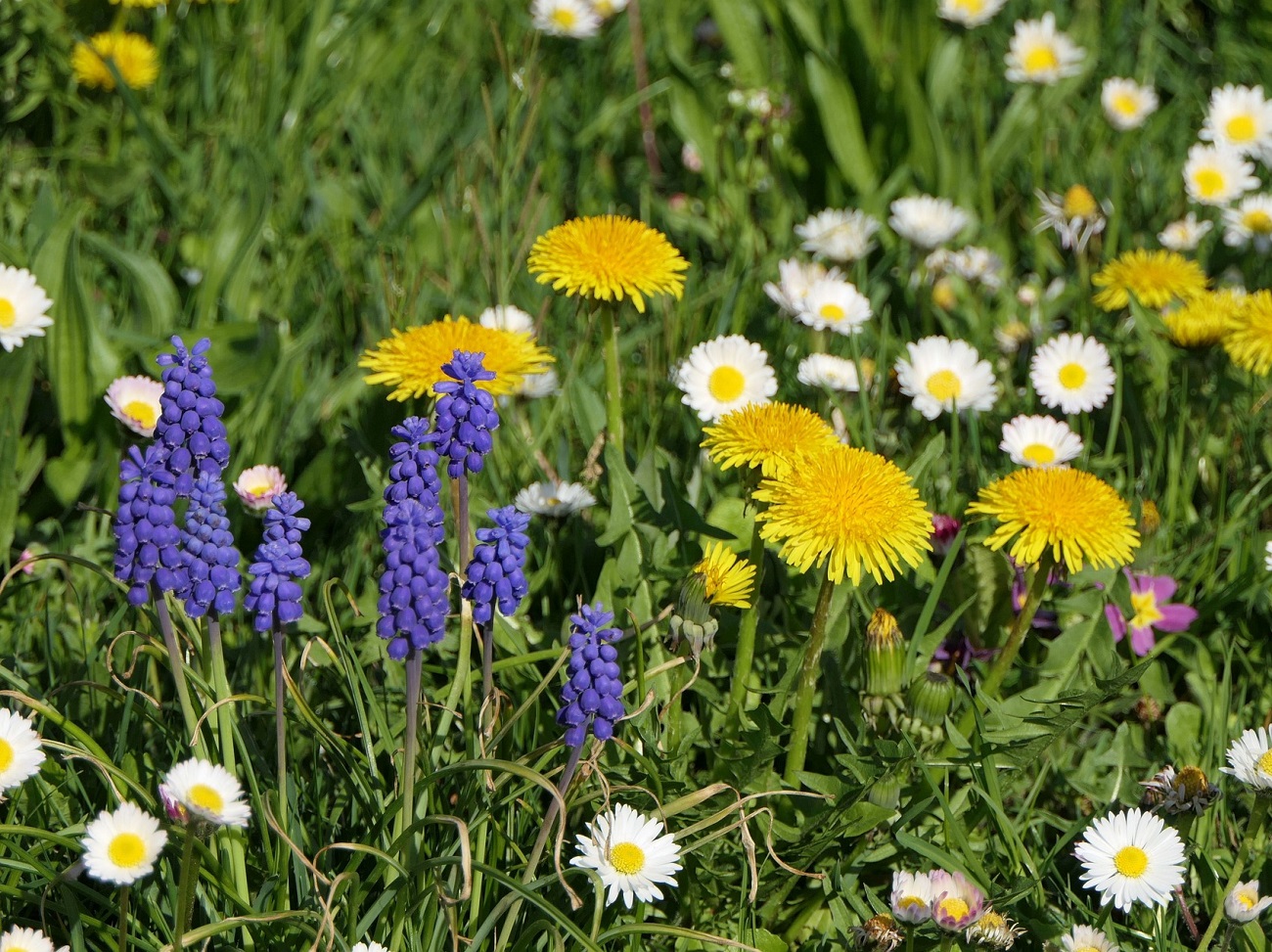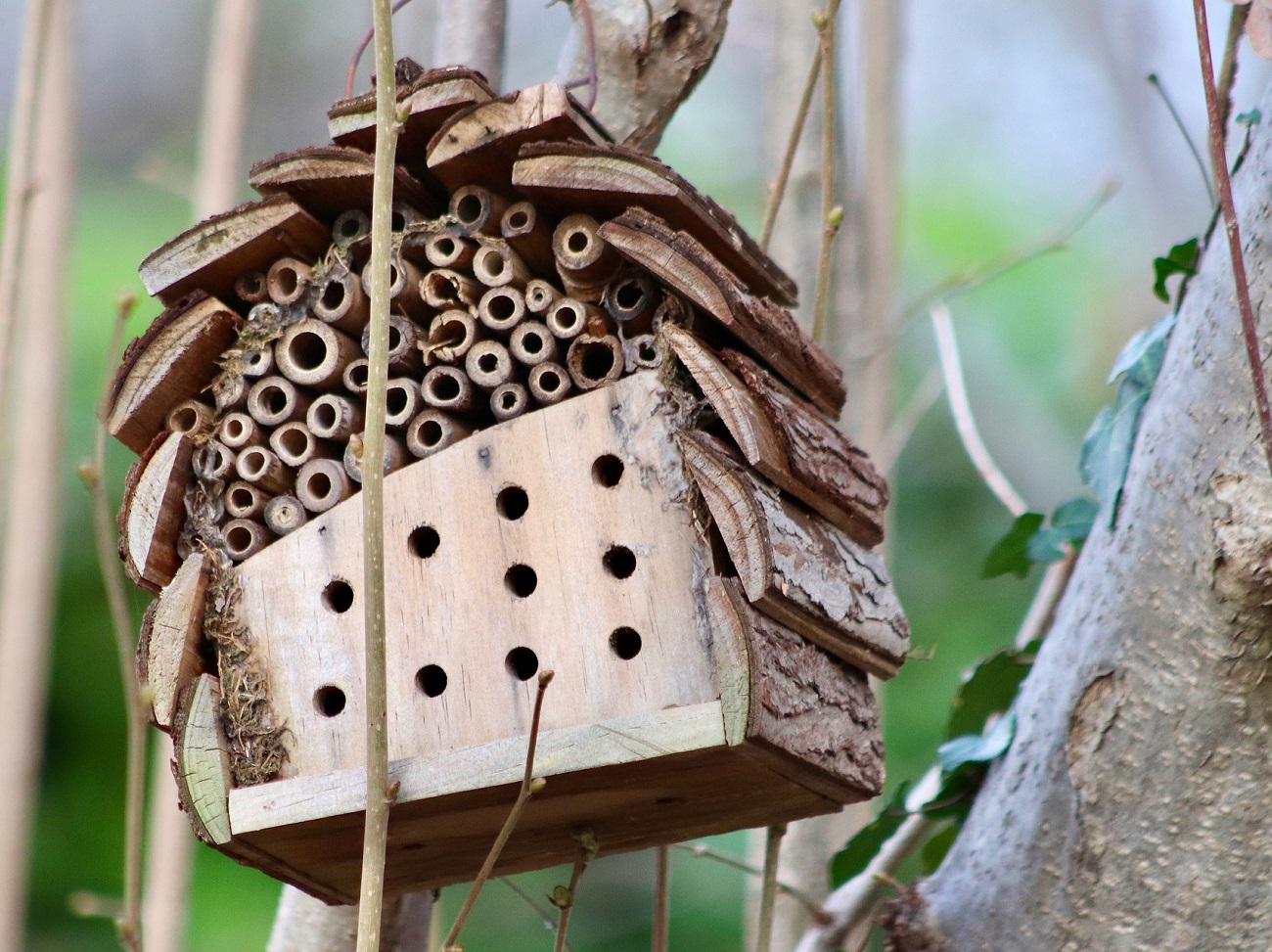April 24th 2024
Buzzing with Life: How to Create a Bee-Friendly Garden

Bees are the busy behind-the-scenes heroes of our gardens and ecosystems. These fuzzy flyers act as pollinators, carrying pollen from flower to flower, which is essential for plant reproduction. Without bees, many of the plants we rely on for food, from fruits and vegetables to nuts and seeds, wouldn’t be able to reproduce. This decline would have a domino effect, impacting wildlife that depends on these plants for food and shelter. Sadly, bee populations around the world are threatened by habitat loss, pesticide use, and disease. This article is packed with easy-to-follow tips on how to create a bee-friendly garden to transform your garden into a bee bonanza:
With World Bee Day just around the corner (20th May 2024), there’s no better time to consider creating a welcoming haven for these fuzzy friends in your own garden!
One of the simplest ways to attract bees to visit your garden is by growing flowers rich in pollen and nectar – perennial plants, plants that re-grow each year, are great, but don’t discount flowering annuals, shrubs and trees, too.
Plants that attract bees to your garden
How to create a bee-friendly garden : A Bee-Feast Throughout the Seasons
- Bee Buffet: Bees crave a diverse floral menu. Plant a variety of bee-friendly flowers throughout the season, from spring bulbs like crocuses to summer favourites like sunflowers and asters. Don’t forget about autumn blooms like sedum and dahlias!
- Single over Double: Opt for single flowers over densely packed double blooms. Single blooms offer bees easier access to the nectar and pollen they need.
- Colourful Bounty: Bees love blue, purple, and yellow flowers. Consider borage, lavender, catmint, poppies, and herbs like rosemary and thyme.
- Let it Bloom: Relax your mowing routine! Allow some “weeds” like dandelions and clover to bloom – they’re a bee smorgasbord!

Beyond Blooms:
- Bee-lated Homes: Provide nesting sites for solitary bees by creating a bee hotel. Pack hollow stems or drill holes in untreated wood blocks for them to lay their eggs.
- Water Works: Bees get thirsty too! Place a shallow dish filled with clean water and pebbles, allowing bees to rest and drink safely.
- Natural Neighbours: Avoid using pesticides and herbicides in your garden. These chemicals harm bees and other beneficial insects.

Lending a Helping Hand: What to Do if You Find a Tired Bee
Even in a bee-friendly haven, you might occasionally encounter a tired bee. Here’s how you can lend a helping hand:
- Leave it Be (Sometimes): If you spot a bee resting on a flower or a sunny spot, it might just be taking a quick break. Leave it be and allow it to recharge on its own.
- The Sugar Rush: If the bee looks particularly sluggish or isn’t on a flower, you can create a simple sugar water solution. Mix one tablespoon of white sugar with two tablespoons of warm water. Place a few drops on a shallow dish or spoon with a rough surface, like a leaf. This will allow the bee to drink safely without drowning.
- A Gentle Lift: If the bee is on the ground and unlikely to reach the sugar water, carefully move it to a nearby flower or the dish with a twig or leaf. Avoid grabbing the bee directly with your fingers, which could damage its wings.
Remember: Bees are important pollinators, but they can also sting.
If you’re uncomfortable helping a bee or are allergic, simply leave it alone and it will likely revive on its own.
Bonus Tip: Let your neighbours know! By working together to create a bee-friendly garden neighbourhood, you can create a much larger network for these vital pollinators.
With a little planning and these simple steps, you can create a beautiful garden that buzzes with life and supports our bee populations. Remember, every bee counts!
For further information visit:
https://www.rhs.org.uk/wildlife/garden-bees
https://www.woodlandtrust.org.uk/blog/2019/03/wildflowers-for-bees/
https://www.gardenersworld.com/plants/how-to-make-a-bee-friendly-garden/
If this article is of interest you may also enjoy reading the following:



 Customer Portal
Customer Portal




